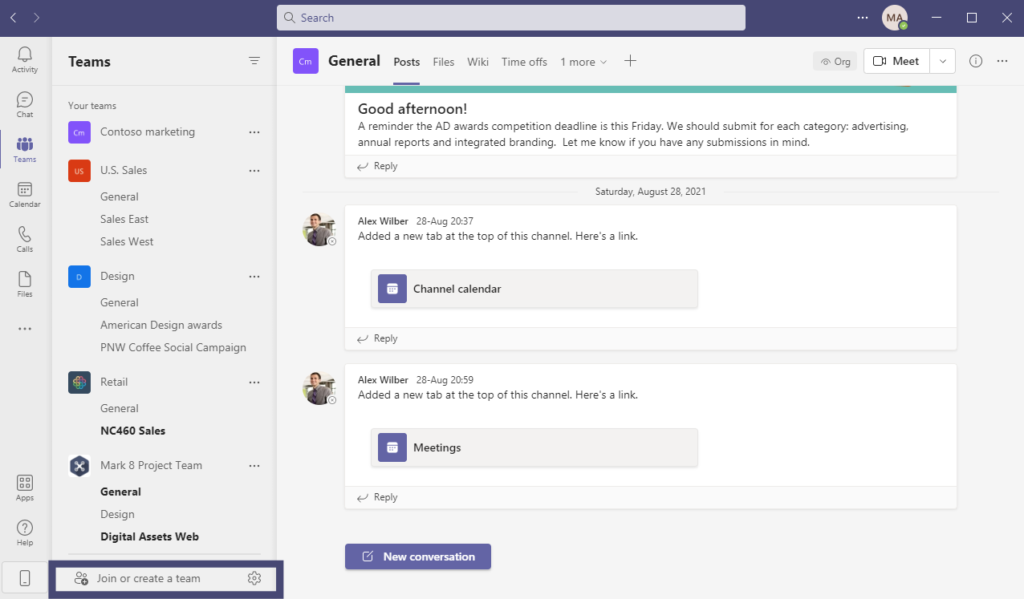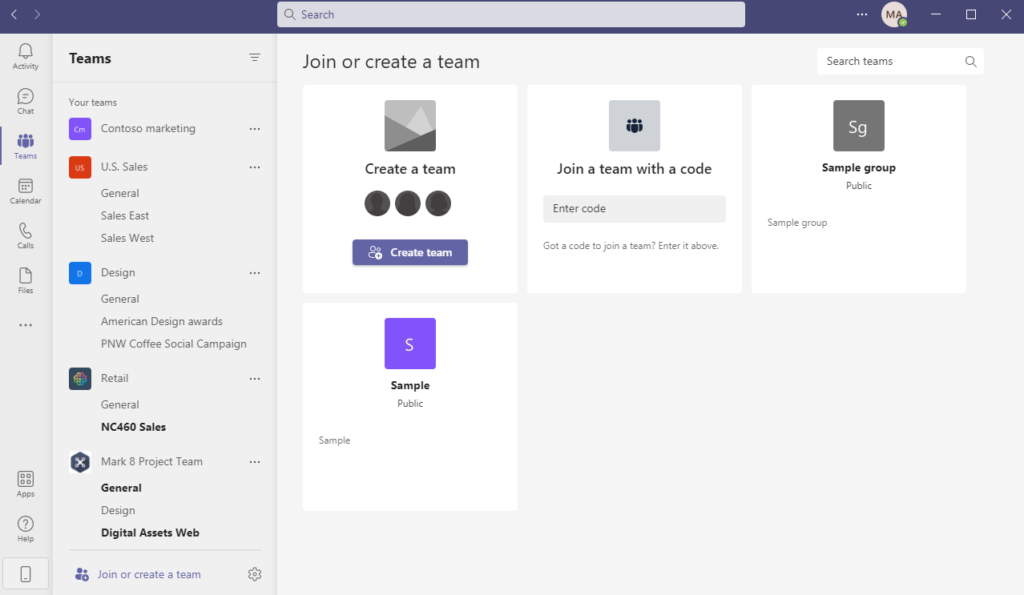Microsoft Teams stepped in to answer a question that managers of remote and hybrid teams were asking themselves: How do we create a productive virtual workplace? Microsoft Teams provides a wide range of features that help users connect and collaborate while maintaining productivity. It is a great tool not only because of these features but also because of integrations with native and third-party solutions and a number of different shortcuts. In this article, we will focus on one of such shortcuts – team cloning.
Let’s do a quick recap for readers who are relatively new to Microsoft Teams. When working via Microsoft Teams, it is important to distinguish between teams and channels. Teams gather participants to work together on a certain project. Within the teams, there are two types of channels. Standard channels are accessible to everyone, while private channels are for a specific audience. Channels enable participants to start conversations, conduct meetings, and share documents to collaborate.
Let’s say, there’s a creative agency that has the following departments:
- Branding
- Graphic design
- UI/UX design
- Video production
- Animation, etc.
If they’re moving their work to Microsoft Teams, they’d need to open teams for each of these departments. Within those teams, they open channels that are dedicated to one particular aspect of work. For example, under Video production team, they can have the following channels.
- Brainstorming
- Script writing
- Finances/budget
- Equipment
- Post-production/editing
- Casting, etc.
It’s up to you to decide what kinds of teams and channels you want to create. They can be based on departments like the example above or based on clients, projects, partners, etc.
Now, onto the main topic – team cloning.
What is team cloning?
Microsoft Teams cloning feature enables people to replicate the existing teams to create new ones. The feature helps leverage the “best practice” of the already-existing team to potential teams. You can incorporate your favorite and/or necessary elements into the new team. For example, channels, tabs, apps, settings, and much more.
Team cloning, however, has certain limitations. In other words, things that you can’t clone. For instance, you can’t transfer content such as messages, files and app configurations into a new team. Membership cannot be transferred either; you need to add team members manually.
Creating a team based on an existing team
Here is a brief guide to show you how you can clone a team.
Log in to your Teams account. Choose Teams from the menu on the left and scroll down your teams list to find the Join or create a team button.

You’ll see a new window that presents you with four choices. Select Create a team.

From there, click on From a group or team. You can choose to either create a team from an existing team or a Microsoft 365 group. When you select Team, you’ll see a list of your current teams. To proceed, choose the one that you’d like to clone.

Next, choose the team’s name and add a description. In addition, use the checkboxes to corporate your desired data into the new team.

Lastly, click on Create.
That’s it. Just a couple of simple steps and you’ve got yourself a ready-to-go team.
Benefits of team cloning
Microsoft Teams cloning enables organizations to swiftly create teams based off current teams, making it easier for people to integrate Teams into their communication and collaboration processes. The benefits are many and let us go over some of them.
Reduced manual work
Cloning helps save time. As more organizations transition to the remote world, adapting to the new environment can be a challenge; therefore, taking advantage of such features makes users’ lives simpler. Cloning a team requires only a few steps, so you can invest all the time and effort you’d give on manually creating teams somewhere else.
Easy to use
Second, the feature can be seamlessly used by everyone if the steps above are followed. Additionally, the more users are able to clone and create new teams, the less the burden for the IT department.
Cohesion in teams
Lastly, team cloning ensures that all teams/channels follow a similar structure and logic. This is essential especially in companies where people work with multiple departments and need access to more than one team. Cloning allows to have cohesive teams that follow similar structures. So, when users go from one team to another, they don’t find themselves in a whole new world (if I may quote Aladdin).
Microsoft Teams cloning vs. templates
Besides cloning, there is another method that helps create teams quickly and easily. Using native or third-party solutions, you can develop a template that you can use when creating new teams. They serve a similar purpose as cloning but depending on the solution you choose you can get more benefits.
Teams templates
Templates serve as a starting point while creating a new team. They have the same benefits as cloning (and more). Templates save time, effort and in some cases, even financial resources. You can create templates on Microsoft Teams by using either its native solution or through third-party apps.
If you want to do it via the native solution, you will need to create a team from a template in Teams or using Microsoft Graph. The application’s starting point is the base template, and you can add layers and more components, such as channels and tabs. The extended configurations are added only by a series of API calls. The base templates are created by Microsoft for specific industries, which you can use:
- Financial templates
- General templates
- Government templates
- Healthcare templates
- Manufacturing templates
- Retail templates
You can learn more about Microsoft’s native template solution here.
The Teams’ native template approach has some disadvantages:
- The configurations require programming skills.
- Any modifications in the template will require help from an IT specialist.
- There’s no way of cloning a team to use it as a “template.”
Compared to the native template solution, cloning seems much simple and user-friendly because:
- The use of this approach doesn’t require the help of another party; therefore, any user can do it – as long as the person has the permission to create a new team.
- Making modifications is simple. The changes can be done in the reference team.
Cloning in Microsoft Teams through third-party template solutions
Instead of the native solution, you can opt for third-party solutions like Collaboration templates by SalesTim, which offer a number of benefits. Three simple steps with the SalesTim app and you’ll have a Microsoft Teams Collaboration template.
Here is how you do it:
- Create an original team on which you’ll base your template and add all the required channels, tabs, apps, and files for the project.
- Open the SalesTim app, go to Catalog, select + New template and name your template.
- Next, a new window will appear, where you are required to configure your template settings.
This last point is where some of the key benefits of Collaboration templates are embedded. The solution not only allows you to create templates but also gives you the opportunity to set governance policies and rules. These rules help you maintain cohesion and enforce security across all your teams created from the template.
When your template is created, through governance capabilities, you can enforce a set of rules that all teams have to comply with. For example,
Naming convention – it means all teams have to follow a clear naming strategy whether it’s having the client’s name or indicating a geographic location.
Audience targeting – it allows you to determine who can use your templates.
Permanent membership – add the right people to each team created from the template.
Security – choose between public or private privacy and add a mandatory number of owners and members.
You can learn about all governance policies and rules here. It’s worth highlighting and none of these are available through cloning.
Another huge advantage that templates have over cloning is that they allow cloning of content as well. For example, if there are certain documents that you need all your teams to have access to, simply upload them to the files tab of the original team (the template) and they will be transferred to the rest of the teams. Similarly, apps can be pre-configured with content as well, such as tasks in Planner, files in SharePoint libraries, notes in OneNote, etc.
Microsoft Teams cloning is a great method to use when projects are accumulating, and you need new teams urgently. But if you’re looking for a more long-term, unified, and beneficial solution then templates are a better option. In only a few steps, without the need for the IT department’s interference, anyone can clone a team and simply choose the elements that will be included in the new team.
